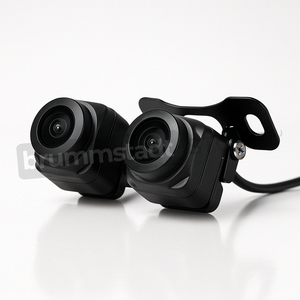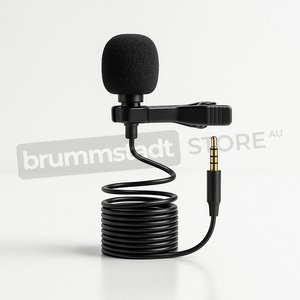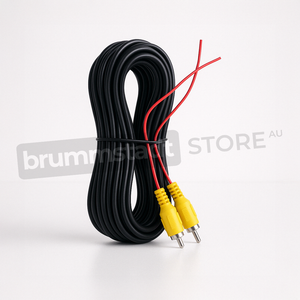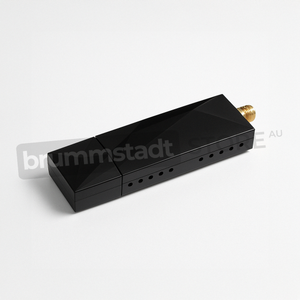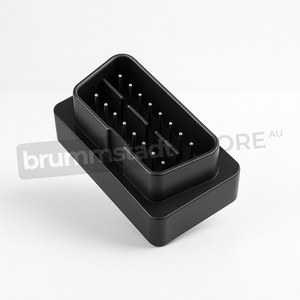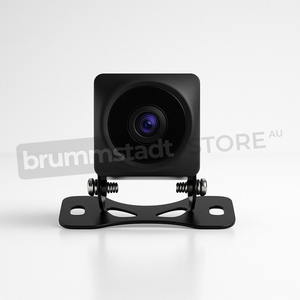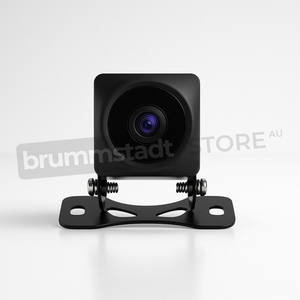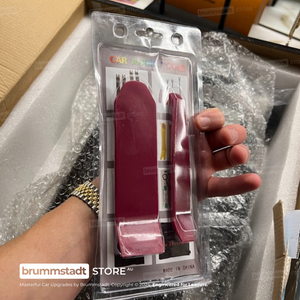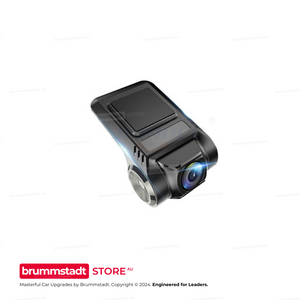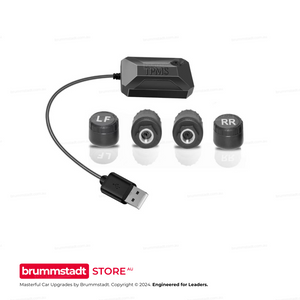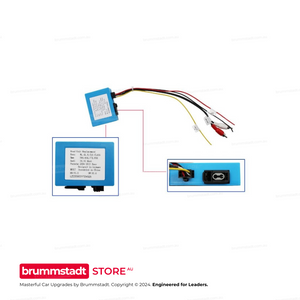Frequently Asked Questions
Everything you need to know about this head unit
Connect the single RCA cable with the yellow plug (included in your package) to extend your Bluetooth signal. This cable doubles as both a camera input AND a Bluetooth/WiFi antenna extension. The two small blue wires attached are antenna boosters that significantly improve connection stability. This simple connection takes 30 seconds and resolves 90% of Bluetooth issues. Make sure it's firmly connected even if you're not using a rear camera.
Try these proven solutions:
1. Quick Fix: Settings → Apps → Z-Link → Disable → Enable → Open (repeat each use)
2. Check Cables: Use the data/charge USB cable (not charge-only)
3. Bluetooth Setting: Disconnect all other Bluetooth connections - CarPlay needs exclusive access
4. Factory Reset Z-Link: Find the pink 'RESET' app, restart, reconnect Bluetooth, then try Z-Link
5. Sound Issues: Switch audio source to 'AUX' or 'USB/AUX' in your vehicle menu
Most issues are resolved with step 1 or 3!
The processor differs between models: The 2/32GB has a 4-Core processor, while 4/64GB and 8/128GB models feature the powerful 8-Core Cortex-A55 processor. Combined with RAM differences: The 2/32GB model with its 4-Core processor and limited RAM may experience slowdowns with heavy multitasking. The 4/64GB with 8-Core provides smooth performance for most users - no lag, seamless app switching, and enough storage for maps and music. The 8/128GB with 8-Core offers maximum performance with its generous RAM allowing unlimited multitasking and massive storage for extensive media libraries. Think of RAM like your desk space - more RAM means you can have more apps open simultaneously without slowing down.
Absolutely normal! These head units are complete replacement systems with their own GPS antenna, microphone, and Bluetooth module. Your factory connectors for these features won't be needed anymore. The important connections are: main power harness, speaker outputs, and the yellow RCA cable (even if not using a camera - it extends Bluetooth range). Any leftover factory plugs can be safely tucked away. If you're unsure about any connection, our support team is here 7 days a week.
Z-Link updates are handled through system firmware updates. Go to Settings → System → System Update. If an update is available, download it to a USB drive (FAT32 format) and install. Important: Never download Z-Link APKs from unofficial sources - they won't work and may cause issues. If you're having compatibility issues with newer iOS versions, the disable/enable workaround (Settings → Apps → Z-Link) usually resolves them while waiting for official updates.
Consider your usage:
• 2/32GB (4-Core): Budget option - fine for basic use, but may lag with multiple apps due to 4-Core processor and limited RAM
• 4/64GB (8-Core): Sweet spot - smooth Android Auto/CarPlay, multitasking, and ample storage
• 8/128GB (8-Core): Premium choice - unlimited multitasking, massive storage, future-proof for years
Most customers choose 4/64GB for the perfect balance of performance and value. The extra RAM makes a huge difference in daily smoothness!
The yellow RCA cable's blue antenna wires also boost WiFi signal! Make sure this cable is connected. Additionally, try these tips: Position the blue antenna wires away from metal surfaces, check that your phone's hotspot is set to 2.4GHz (not 5GHz) for better range, and ensure the head unit's WiFi sleep policy is set to 'Never' in Settings → WiFi → Advanced. For best performance with wireless CarPlay, keep your phone within 1-2 meters of the head unit.
Go to Settings → Sound → Equalizer and adjust to your preference. For more volume, increase the 'Loudness' setting. The 4/64GB and 8/128GB models have superior audio chips that provide cleaner, louder sound. If you have an amplifier, use the RCA outputs for best quality. Also check Settings → Factory Settings (password usually 126) → Audio settings for additional gain controls. Remember: higher-spec models (4GB+) include premium audio components for noticeably better sound.
Yes! Most vehicles work instantly. If not, use the steering wheel learning app: tap the steering wheel icon, press each button on your wheel, and assign functions. For newer vehicles with CANbus, we provide CANbus modules for automatic setup. Some vehicles may need the Key1/Key2 wires connected (usually included in our harness). If you're having trouble, let us know your exact vehicle model and we'll provide specific instructions.
We offer a 30-day return policy. If it doesn't fit or there's a compatibility issue, we'll work with you to resolve it. If you change your mind, a 20% restocking fee applies. Our team verifies compatibility before shipping to minimize issues. We provide installation support 7 days a week to help resolve any problems. With our 3-year warranty and Australian-based support, you can purchase with confidence. Full details in our Refund Policy.
Historical Analysis of the Nissan Pathfinder's Evolution:
First Generation WD21 (1986-1995):
The original Pathfinder, launched in 1986, represented Nissan's determination to capture the growing SUV market, particularly in North America. Known as the Nissan Terrano in Japan and several international markets, this model was sturdy, capable, and instantly distinctive for its rugged styling and dependable mechanical foundation. Built initially on Nissan's compact pickup truck platform, it quickly gained popularity for its impressive off-road capabilities, truck-strength durability, and passenger-oriented cabin. A classic three-door variant, later joined by a practical five-door version, established the Pathfinder's credentials as a genuinely versatile and capable vehicle well-suited to multiple roles.
Second Generation R50 (1996-2004):
Embracing shifting consumer preferences towards increased refinement and comfort, the second-generation Pathfinder transitioned to a unibody design, significantly improving on-road handling and passenger comfort. Still known as Terrano or Pathfinder across various global markets, its styling became subtly modernized, projecting sophistication without sacrificing distinctive visual strength. Powered by reliable V6 engines and available with electronic shift-on-the-fly 4WD, the R50 maintained respectable off-road performance while excelling as family-friendly transportation. Its blend of comfort, durability, and flexibility reinforced Pathfinder's standing amongst midsized SUVs in North America, Europe, Australia, and Asia alike.
Third Generation R51 (2005-2012):
Representing considerable engineering advancement and design expansion, the Pathfinder R51, covering models from 2005 to 2012 (specifically referenced between 2006 and 2012), reverted to a robust body-on-frame truck-based architecture, sharpening its towing and off-road abilities substantially. Internationally respected for its robust performance, the R51 was marketed as Terrano in specific regions—primarily Japan—while North America, Australia, Europe, and other regions knew it as Pathfinder exclusively.
Provided with advanced independent suspension and equipped with powerful V6 or, in global markets, durable diesel engines, it instantly appealed to drivers seeking both capable off-road adventures and responsive highway comfort. Interior refinement increased noticeably, with notable advancements in seating versatility—seven-passenger functionality was firmly established—and ergonomic practicality combined generously with interior space and overall comfort. Enhancements in handling dynamics, better noise isolation, and thoughtful interior materials reflected Nissan's attentive responsiveness towards evolving consumer demands. Consequently, this generation significantly raised Pathfinder's status within midsize SUVs, catering equally well to families, daily commuters, and serious adventurers seeking dependability and comfort.
Integrating Upgraded Technologies—Brummstadt’s Premium Head Unit Compatibility:
To complement and elevate the Pathfinder's inherent qualities, many drivers now consider aftermarket infotainment enhancements. Among suitable upgrade options, Brummstadt offers a premium head unit thoughtfully tailored for Nissan Pathfinder R51 series from 2006-2012.
Carefully engineered to integrate visually and functionally within the Pathfinder’s interior layout and original styling, this infotainment system introduces practical technological advancements well-suited to modern driving expectations. Its fundamental appeal rests upon comprehensive wired and wireless Apple CarPlay and Android Auto compatibility, providing intuitive smartphone connectivity directly via the infotainment screen interface. This facilitates easy access to essential apps—including Google Maps, Apple Maps, WAZE, Spotify, and Pandora—without driver distraction, significantly elevating comfort, convenience, and travel preparedness.
Imagine a scenario of peaceful family dining concluding pleasantly in the late evening—destinations and routes carefully input into a smartphone beforehand. As passengers return to the vehicle, the established directions begin seamlessly appearing on the infotainment screen, immediately transforming the journey toward a friend's residence into enjoyable, stress-free navigation. This smooth transfer ensures effortless route following without disrupting relaxed conversation or requiring complicated card-based navigation adjustments, exemplifying subtle practicality improvements.
Additionally, an optional high-definition camera upgrade—offering crystal-clear 1080p resolution for front and rear viewing—ensures valuable safety during maneuvers and backing operations. By capturing and recording vehicle surroundings comprehensively, it provides both stronger driver confidence and vital evidence should unexpected incidents occur.
Advanced connectivity further presents opportunities for interactive engagement: connecting gaming controllers over USB enables passengers to have enjoyable multiplayer gaming experiences right in their seats, transforming every road trip into memorable shared experiences. Strong emphasis also extends into intuitive voice control integration; supporting smart-assistants like Apple's Siri or Google's voice assistant, users conduct hands-free calls, messaging, music and navigation management, as well as interactions with home-based smart devices. Drivers approaching home late in the evening could, for instance, effortlessly direct porch lights activation through spoken commands, perfectly demonstrating how intelligent technology thoughtfully complements day-to-day automotive lifestyles.
Vehicle Strengths and Compatible Accessory Integration:
Pathfinder R51 models between 2006-2012 adeptly combine genuine off-road ruggedness, meaningful towing capacity, responsive acceleration, and commendable interior refinement. Each of these elements ensures continued appeal among families and urban commuters seeking combined practicality with real off-road flexibility. These traits blend harmoniously with modern technological integrations like the specially designed infotainment system from Brummstadt, which substantially modernizes and adds significant convenience, safety, and overall comfort improvements.
Such enhancements communicate positively with drivers' lifestyle quality, enriching journeys personally and practically alike. Informative navigation aids, intuitive media management, versatile entertainment solutions, superior vehicle visibility, and intelligent voice-controlled smart integration significantly contribute to enjoyable, meaningful vehicle interaction and mobility convenience.
In reflecting upon Nissan Pathfinder's third-generation accomplishments (2006-2012), it's clear how conscientious technological complements can meaningfully elevate already dependable vehicles into genuinely contemporary companions for memorable transportation experiences. Balancing thoughtful enhancements with authentic brand heritage, the Pathfinder R51 continues to provide high adaptability, genuine reliability, and everyday practicality deeply valued across the globe.
















